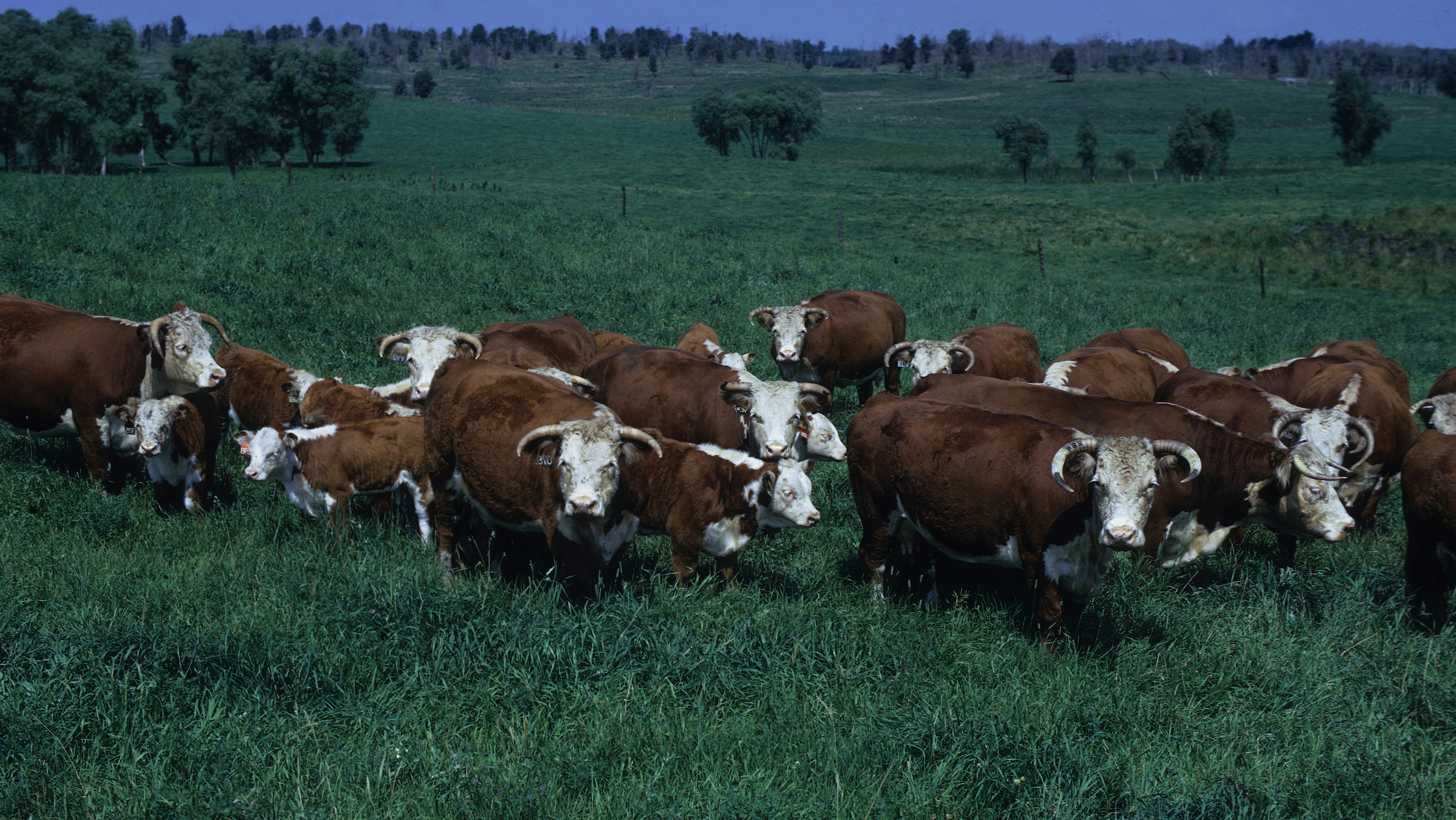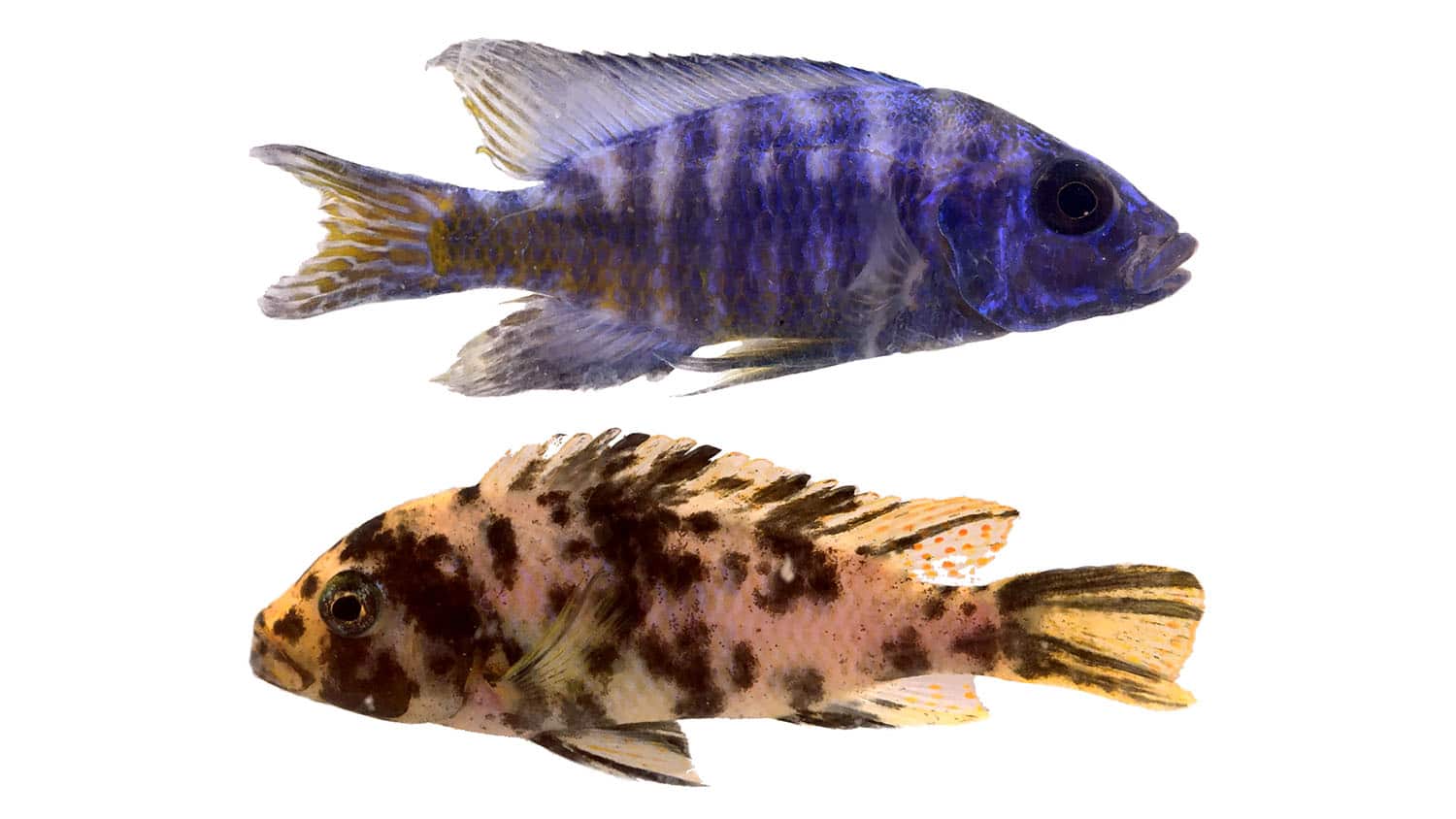Colostrum Key to Saving Beef Calves From Trouble

For Immediate Release
In a pair of recent studies, researchers examined risk factors that contribute to insufficient antibody transfer to newborn beef calves, as well as the subsequent negative health effects. They found that the mother’s parity (“heifers” or first-time cow moms vs older cows) and the need for colostrum intervention were the risk factors most likely to result in insufficient antibody protection. Further, they found that calves with low or failed antibody transfer that do survive have increased medical treatment needs, higher mortality rates and lower body weights.
The studies illuminate the connection between antibody transfer and calf health, and point to a need for beef calf-specific colostrum intervention strategies and better vaccine management for pregnant cows and heifers.
The first 24 hours of a beef calf’s life are crucial in part because that’s when they receive their mother’s colostrum – the antibody-rich first milk that transfers protection to the calf against various diseases.
“We really wanted to highlight the connection between antibody transfer and overall beef calf health outcomes – there is a reason colostrum is often referred to as ‘liquid gold,’” says Lisa Gamsjaeger, assistant professor of population health and pathobiology at North Carolina State University and corresponding author of the research. Gamsjaeger did the work while at the University of Calgary in Canada.
Gamsjaeger and colleagues took blood samples from 420 beef calves between one and seven days after birth. They measured the total antibody, or immunoglobulin G (IgG) concentration, and then looked at immunoglobulin levels that were specific to common beef calf diarrheal and respiratory diseases such as E. coli, bovine rotavirus and bovine viral diarrhea virus (BVDV), among others.
The researchers also looked at the calves’ source of colostrum.
“The mean total IgG concentration across all the calves was 39.9 grams/liter (g/l), which is outstanding,” Gamsjaeger says. “For context, 24g/l or higher was considered an adequate antibody transfer, 23g/l to 10g/l was inadequate, and below 10g/l was a failed transfer.”
Overall, 18% of the calves had an inadequate transfer, and 5% had a failed transfer.
In terms of specific antibody concentrations, the researchers saw that calves born to mature cows had higher pathogen-specific antibodies compared to those born to heifers.
“Mature cows have had more exposure to the diseases for that particular herd, and they may have had more pathogen-specific vaccines,” Gamsjaeger says. “Heifers often receive their first vaccines during pregnancy and in our study population, many didn’t get a booster as recommended by the vaccine manufacturers. Vaccines that are administered at the correct times are thought to increase the amount of antibodies present in the colostrum.”
The researchers also saw that the source of calf colostrum was important.
“The biggest risk factor for insufficient antibody transfer is colostrum intervention, which means the calves don’t nurse their mothers as they should but need to be given a colostrum replacement product,” Gamsjaeger says. “This does not mean that colostrum intervention is bad – quite the opposite, in fact – but it tells us that currently we aren’t doing it in ways that provide sufficient antibody transfer to those high-risk calves.
“The colostrum replacement used originates from dairy cows,” Gamsjaeger adds. “Herd histories and exposures are different. Additionally, powdered colostrum products lack maternal immune cells and may have a different bacterial microbiota composition, all of which could have contributed to some of our findings.”
In the second study, the team looked at the health outcomes for calves with failed or inadequate antibody transfer. Calves with failed transfer were eight times more likely to need treatment with costly antimicrobial drugs, and 19 times more likely to die, than those with adequate transfer. And for those that survived, their body weight at weaning was 40 pounds less on average than that of calves with adequate transfer.
“This work highlights the risk factors associated with poor passive immunity transfer and the resulting devastating economic and animal welfare implications,” Gamsjaeger says. “And while the percentages of poor or failed transfer we saw here are lower than in some other recent studies, we can still do better.
“I’m hopeful that our research can lead to improved strategies for managing these calves, such as developing a beef calf-specific colostrum replacement, as well as some evidence-based colostrum management guidelines for beef calves, which should include appropriate vaccine scheduling for cows and heifers.”
The work appears in Preventive Veterinary Medicine and was supported by the Alberta Livestock and Meat Agency. Claire Windeyer, paper co-author from the University of Calgary, was Gamsjaeger’s Ph.D. supervisor. Michel Lévy, and Edmond Pajor also from the University of Calgary, as well as Deborah Haines and John Campbell from the University of Saskatoon, Saskatchewan, also contributed to the work.
-peake-
Note to editors: Abstracts follow.
“Total and pathogen-specific serum Immunoglobulin G concentrations in neonatal beef calves, Part 1: Risk factors”
DOI: 10.1016/j.prevetmed.2023.106026
Authors: Lisa Gamsjäger, North Carolina State University and University of Calgary, Canada; Michel Lévy, Edmond A. Pajor, M. Claire Windeyer, University of Calgary, Canada; Deborah M. Haines, John R. Campbell, University of Saskatoon, Saskatechwan, Canada
Published: Nov. 6, 2023 in Preventive Veterinary Medicine
Abstract:
Maternal antibodies, delivered to the calf via colostrum, are crucial to prevent calfhood diseases and death. However, knowledge regarding the factors influencing this transfer of total and specific Immunoglobulin G (IgG) against common enteric and respiratory disease pathogens under current production conditions is sparse. The objectives of this study were to determine risk factors influencing total and pathogen-specific immunoglobulin G (IgG) concentrations against Escherichia coli (E. coli), Bovine Rotavirus (BRoV), Cryptosporidium parvum (C. parvum), Bovine Viral Diarrhea Virus type 1 and 2 (BVDV), Parainfluenza Virus Type 3 (PI-3), Bovine Respiratory Syncytial Virus (BRSV), and Bovine Herpesvirus type 1 (BHV-1) in the serum of newborn beef calves. A total of 420 serum samples were collected from 1- to 7-day-old beef calves born on 6 farms in Alberta, Canada. Samples were analyzed by radial immunodiffusion for total IgG concentration and by enzyme-linked immunosorbent assays for pathogen-specific IgG concentrations against E. coli, BRoV, C. parvum, BVDV, PI-3, BRSV, and BHV-1. Multivariable multilevel linear and logistic regression models were built to evaluate dam- and calf-level risk factors associated with total and pathogen-specific IgG concentrations, failed transfer of passive immunity (FTPI; serum IgG < 10 g/L), and inadequate transfer of passive immunity (ITPI; serum IgG < 24 g/L). Farm was included as a random effect in all models to account for clustering at the herd level. Of the 420 calves included in this study, 5% (n = 20) and 18% (n = 75) of calves had FTPI and ITPI, respectively. Receiving colostrum intervention (i.e., being fed colostrum or colostrum product by either bottle or tube) was the most consistent risk factor for low total IgG concentration and significantly increased the odds of FTPI (Odds ratio (OR): 6.1, 95% CI: 2.0 – 18.9) and ITPI (OR: 4.8, 95% CI: 2.1-10.8). Calves born to cows consistently had higher pathogen-specific IgG concentrations (P < 0.0001), compared to calves born from heifers, and calves born to vaccinated dams had significantly higher BRoV, BVDV, and BHV-1-specific IgG concentrations. Interestingly, E.coli-specific IgG concentrations were associated with dam vaccination only in cows but not in heifers, which was likely due to differing vaccination strategies used. This study highlights the need to review and refine protocols with respect to dam vaccination and colostrum intervention on cow-calf operations.
“Total and pathogen-specific serum Immunoglobulin G concentrations in neonatal beef calves, Part 2: Associations with health and growth”
DOI: 10.1016/j.prevetmed.2023.105993
Authors: Lisa Gamsjäger, North Carolina State University and University of Calgary, Canada; Michel Lévy, Edmond A. Pajor, M. Claire Windeyer, University of Calgary, Canada; Deborah M. Haines, John R. Campbell, University of Saskatoon, Saskatechwan, Canada
Published: Nov, 7, 2023 in Preventive Veterinary Medicine
Abstract:
The association of poor transfer of passive immunity (TPI) with negative health outcomes is extensively researched in dairy calves. However, few field studies have examined the effect of total and particularly pathogen-specific Immunoglobulin G (IgG) concentrations on pre-weaning health and growth of beef calves. Hence, the objective of this study was to determine the association of total and pathogen-specific IgG concentrations against selected pathogens associated with neonatal calf diarrhea (NCD) and bovine respiratory disease (BRD) and the odds of pre-weaning treatments, mortality, and the growth of newborn beef calves. A total of 420 serum samples from 1- to 7-day old beef calves born on 6 farms in Alberta, Canada, were available for this observational study. Serum samples were analyzed by radial immunodiffusion for total IgG concentration and by enzyme-linked immunosorbent assays for pathogen-specific IgG concentrations against Escherichia coli (E. coli), bovine Rotavirus (BRoV), Cryptosporidium parvum (C. parvum), Bovine Viral Diarrhea Virus (BVDV), Parainfluenza Virus Type 3 (PI-3), Bovine Respiratory Syncytial Virus (BRSV), and Bovine Herpesvirus Type 1 (BHV- 1). Data about the individual dam- and calf-level risk factors, calf treatments, mortality, and birth and weaning weights were collected. Multivariable multilevel logistic and linear regression models were built to evaluate the association of total and pathogen-specific IgG concentrations with the odds of mortality and average daily gain (ADG), respectively, while their association with the odds of pre-weaning treatment was established by univariable logistic regression analysis. The odds of calves with IgG concentrations < 10 g/L of getting treated (OR 7.9, 95 % CI 2.7–23.7) and dying (OR: 18.5, 95 % CI: 3.7–93.4) were higher than for their counterparts (P < 0.0001). Calves with IgG concentrations < 24 g/L also had higher odds of dying (OR: 10.1, 95 % CI: 2.6–40.2) and had lower ADG (0.09 kg, SE: 0.03, P < 0.002) than calves with IgG concentrations ≥ 24 g/L. Higher BVDV-specific IgG concentration was protective against mortality (OR: 0.97, 95 % CI: 0.96–0.99, P < 0.001). This study highlights the negative association of inadequate TPI with health and growth of beef calves and thus, the need to refine protocols for dam vaccination and colostrum intervention in cow-calf operations to meet these higher IgG targets.


